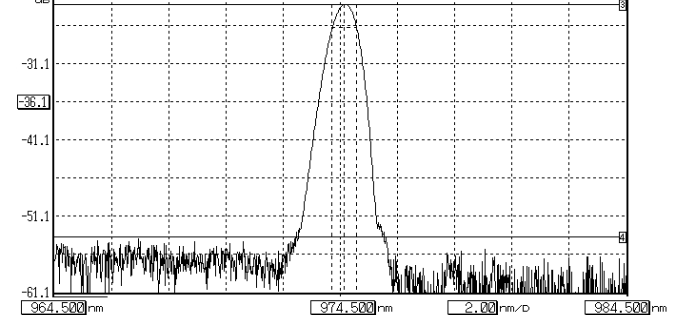Fiber Bragg Grating (FBG) sensors allow for direct measurement of physical quantities such as temperature and strain. Due to the fact that FBG wavelength is sensitive to both temperature and strain, it is not possible to distinguish between these two factors by measuring the wavelength shift of FBG. Therefore, to make the sensor practical, it is important to solve the issue of cross-sensitivity and differentiate between temperature and strain measurements through a certain technique.
The FBG grating sensor system mainly consists of a broadband light source, FBG sensor, signal demodulation, and other components. The light source provides optical energy to the system, and the FBG sensor uses the light waves from the source to sense the measured information from the outside. The measured information is reflected in real-time by the signal demodulation system. The FBG fiber bragg grating reflector is a wavelength-selective reflector that is typically installed at the front end of the optical network unit (ONU) to achieve precise and rapid detection of end-to-end attenuation of the optical link. Compared to a thin-film reflector, the FBG fiber-optic grating reflector has the following characteristics:
It uses the FBG fiber bragg grating to reflect the test light pulse from the OTDR on the optical link terminal OLT side to achieve close to 100% reflection, while allowing wavelengths that do not meet the conditions to pass through the reflector with minimal attenuation. When the OTDR detects the reflected detection signal, it indicates that the fiber optic connection at that user end is normal. If the reflection is low or non-existent, it indicates that the fiber optic is damaged or broken. This allows for rapid online testing of fiber optic lines without affecting other communication signals.
The reflector uses the optical sensitivity of the fiber optic material to write the FBG fiber bragg grating on the core of the fiber, with the grating area completely encapsulated inside the ceramic insert. During the insertion and removal process of the reflector, the FBG fiber bragg grating is not affected and is not influenced by dirt, therefore, it has high reliability.
The fiber optic reflector comes in SC and LC type, which can be used with conventional adapters for easy use. With the widespread implementation of fiber to the home (FTTH) projects in the fiber network, the number of users involved in the network is increasing. Therefore, it is particularly important to quickly and accurately detect fiber network faults for network maintenance. By installing the fiber optic reflector at the fiber optic connection end, the maintenance efficiency of the FTTH network is improved and the costs are reduced. The FBG fiber bragg grating reflector is an ideal choice for fiber optic line monitoring and can be widely used in FTTX networks, PON networks, center room reflectivity testing, communication system link detection, etc.

